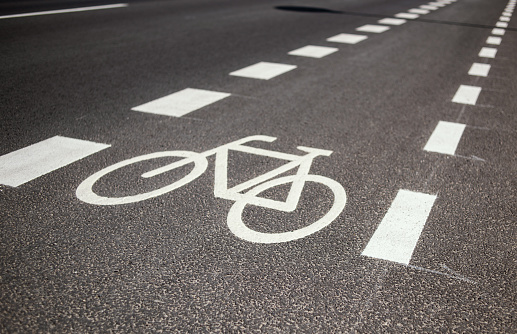
By Gabriela Baron
Bike lanes along Ayala Avenue in Makati will become shared lanes starting Wednesday, Feb. 15.
According to Make It Makati, the Ayala Avenue bike lanes will be changed to sharrows or shared lanes to accommodate both bikers along with the increasing number of commuters riding public utility vehicles (PUVs).
Make It Makati is a collaboration of the city government, Ayala Land Inc., and the Makati Commercial Estate Association.
Sharrows are also seen to help improve the traffic flow in the city.
“This initiative is being done to better serve commuting public and in preparation for the provision of more and bigger transit sheds along Ayala Avenue,” Make It Makati said.
“We remain cognizant of everyone’s needs, especially the biking community, and this is why the city is implementing an organized way of accommodating more commuters through sharrows,” it added.
Increase in commuters
The conversion of bike lanes to sharrows, according to Make It Makati, was due to the increasing number of commuters taking PUVs.
In 2019, a total of 779 buses were authorized by the Land Transportation Franchising and Regulatory Board (LTFRB) to ply Ayala Avenue.
However, by 2023, the number rose by 34% or a total of 1,073 buses due to the anticipated increase in commuters.
Make It Makati also noted an increase in commuter traffic at the One Ayala Terminal from about 10,000 daily in November 2022 to about 37,000 daily as of January 2023.
“With the reopening of the economy, the demand for public transport has increased substantially not only in Makati but throughout Metro Manila,” it added.
“This necessitated the need for the sharrow bike lane project along Ayala Ave to make more room for public transport and commuters.”
‘Sharrows will not keep us safer’
In a statement signed by nearly 200 people including car owners, cyclists, and persons with disabilities as well as over 39 organizations as of Monday afternoon, the individuals and groups protested against the removal of protected bike lanes, which they said “endangers not just the lives of cyclists, but the lives of all road users.”
“The removal of what used to be the gold standard for protected bike lane width has dashed the hopes of many road users for safer streets in our cities,” the statement read.
“We want just one thing: to arrive at our destinations and come home safe. We want to have safer streets where any person can feel safe to walk, bike, go on a wheelchair, commute, and even drive safely,” they added.
They also asked for a “properly designed public transport stops” while reallocating road space for protected bike lanes and walkways as sharrows, they said “will not keep us safer.”
They also called on the Department of Transportation, Department of Public Work and Highways, Metro Manila Development Authority, and the Inter-Agency Technical Working Group on Active Transport to enforce the National Transport Policy which calls for the construction of active transport infrastructure that prioritizes pedestrians, cyclists, and commuters.
